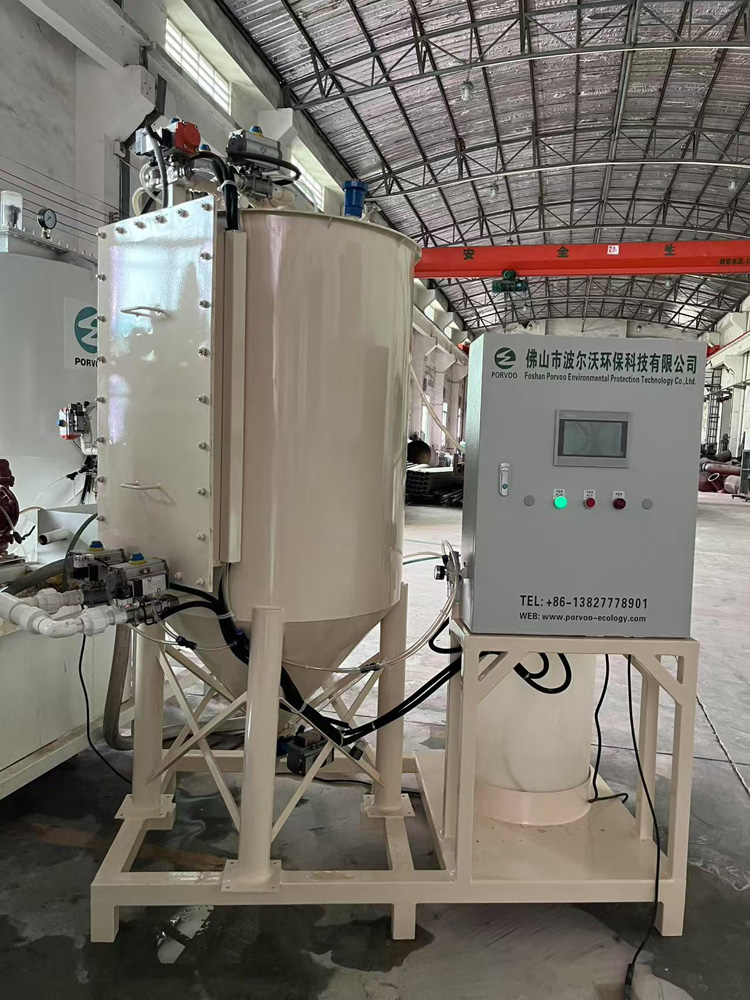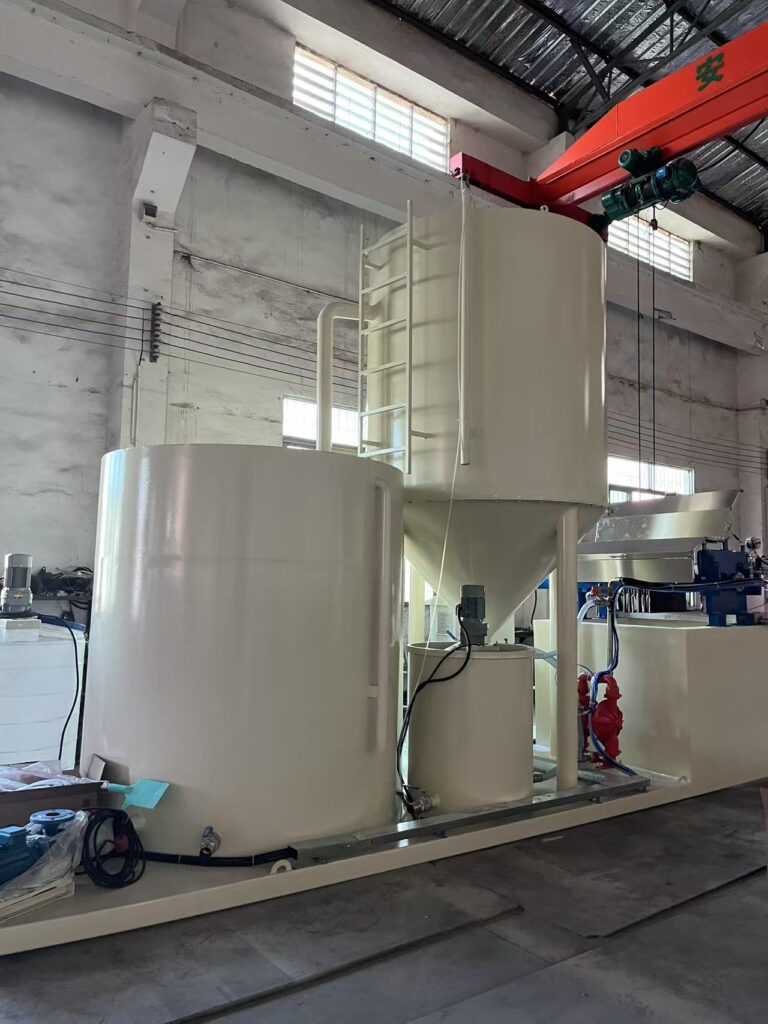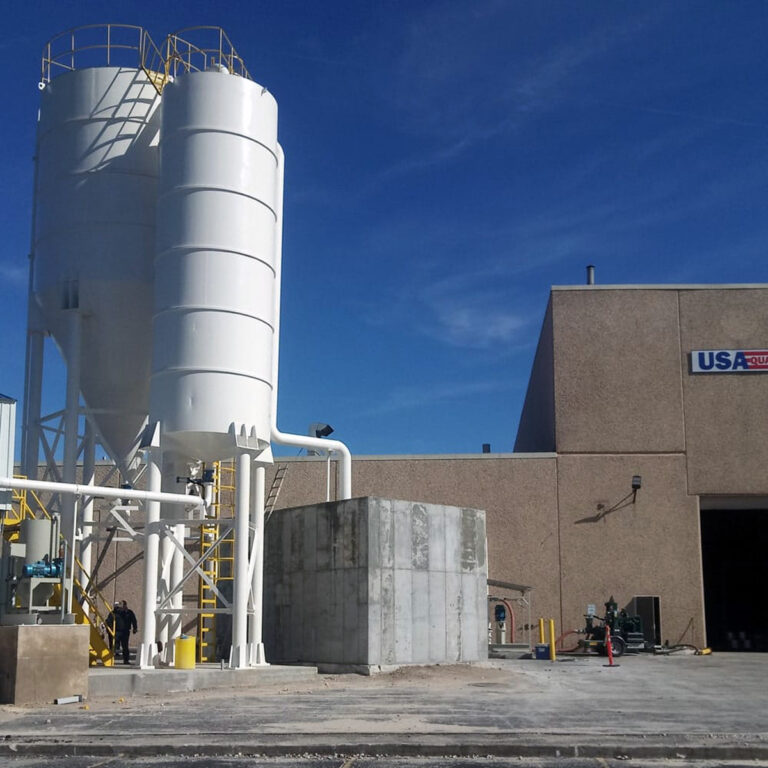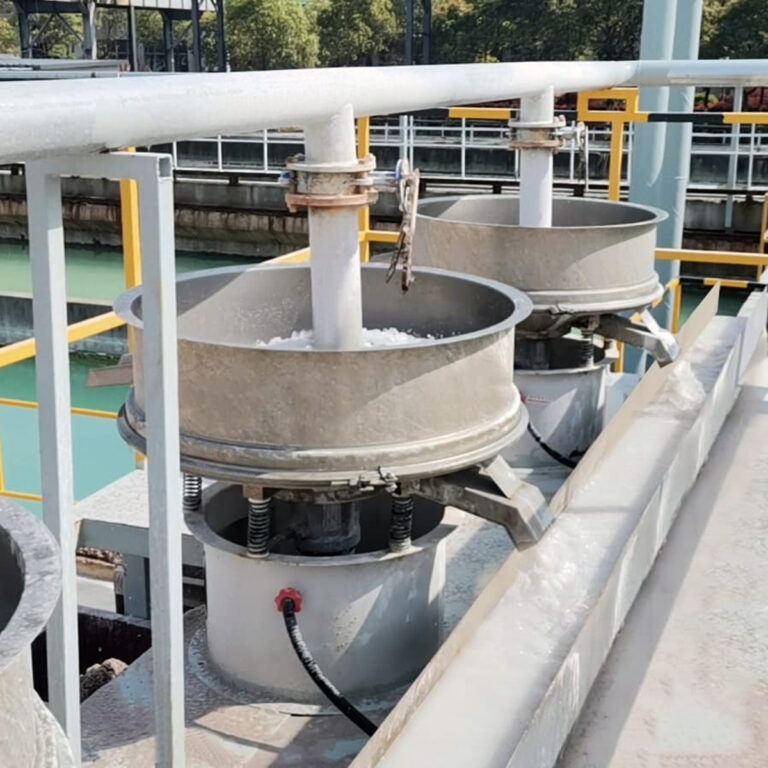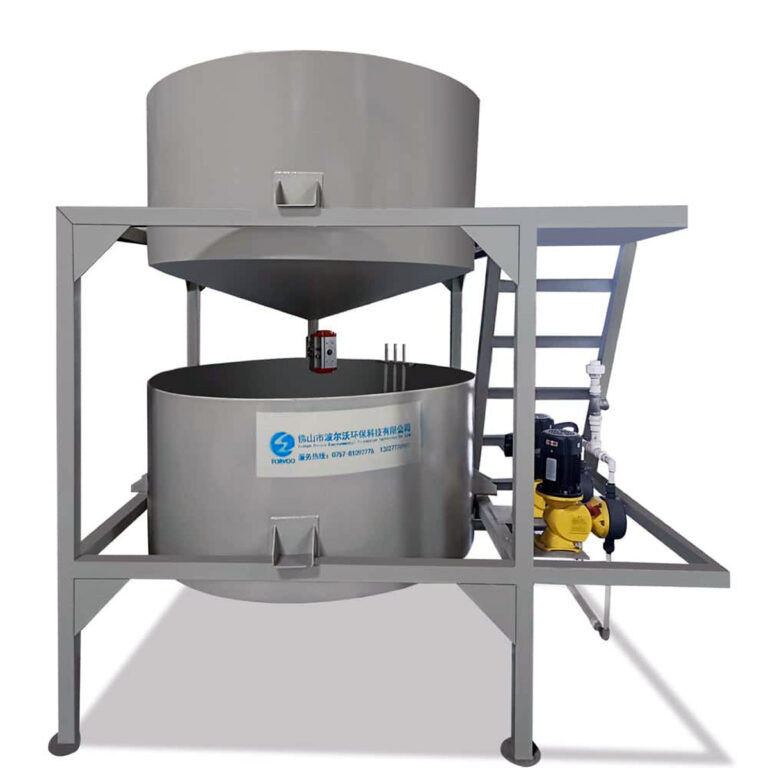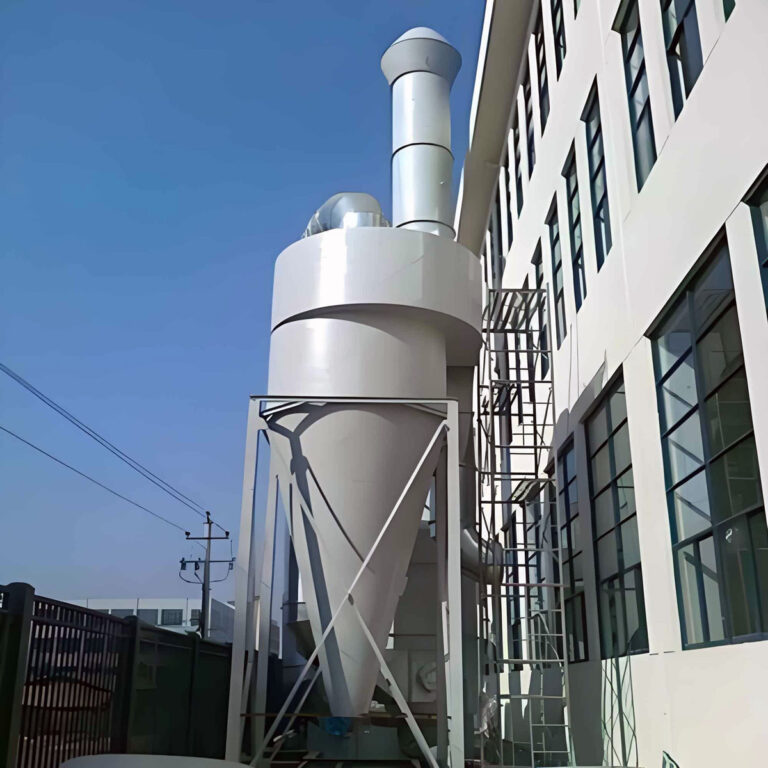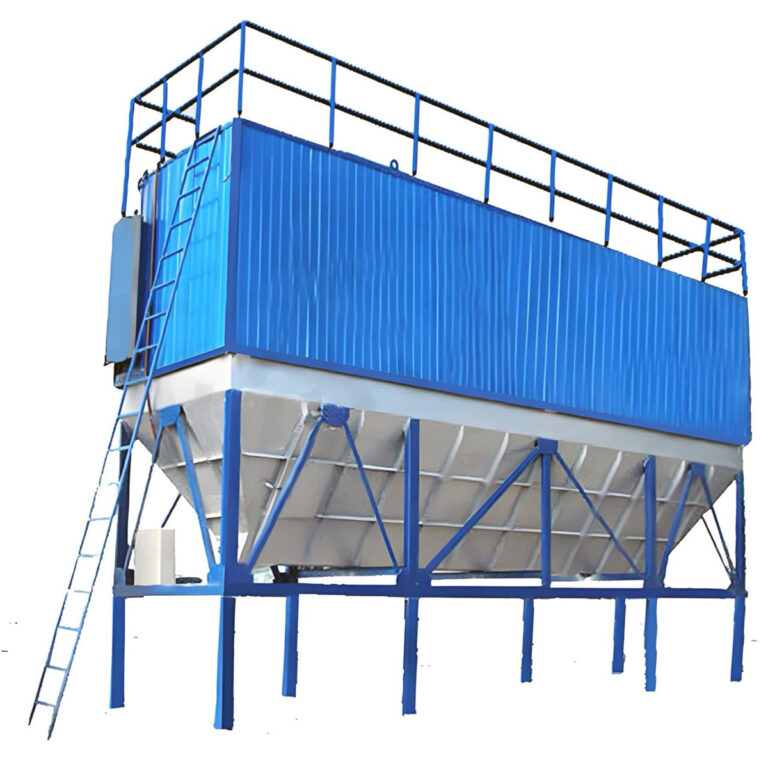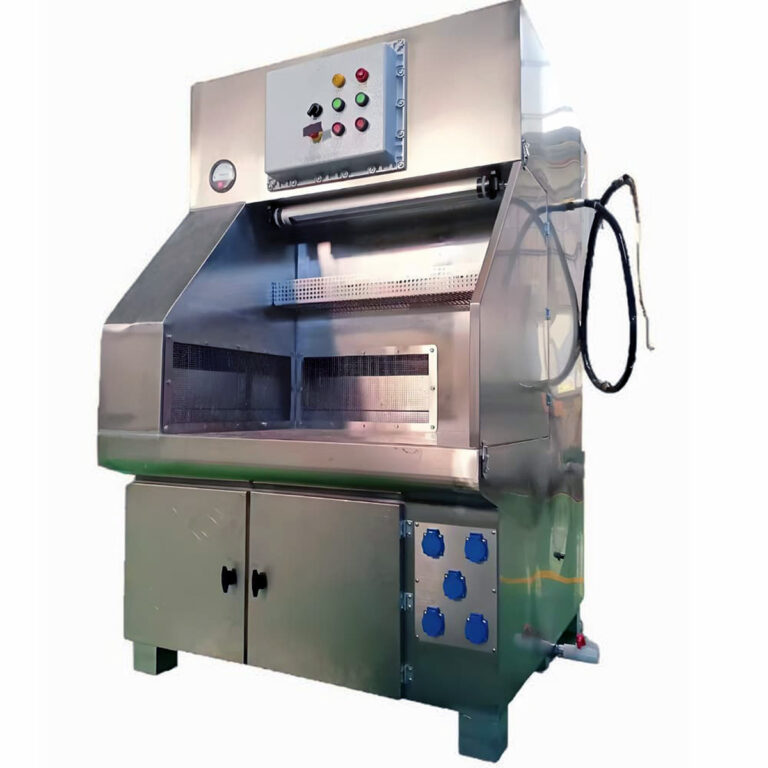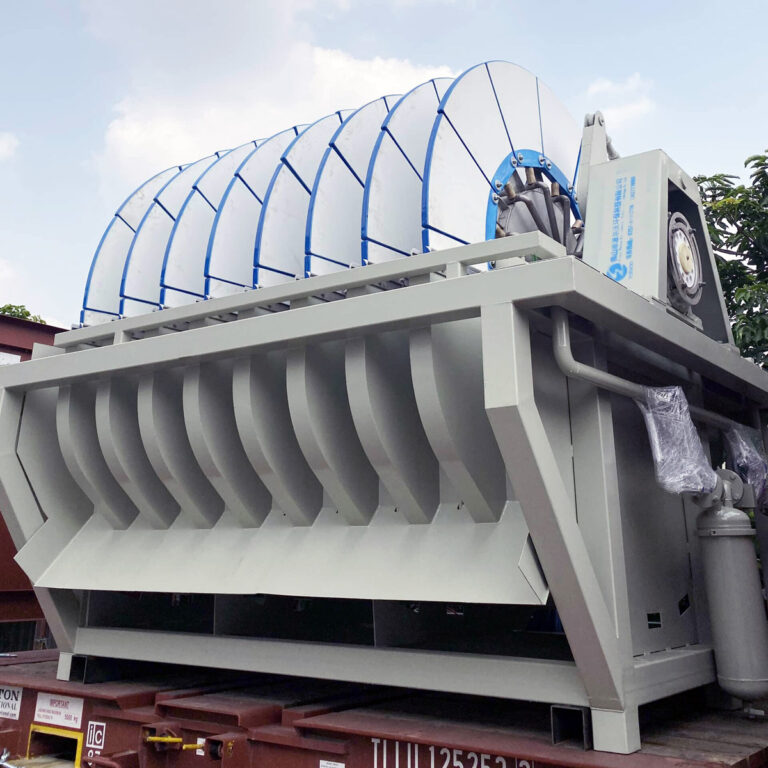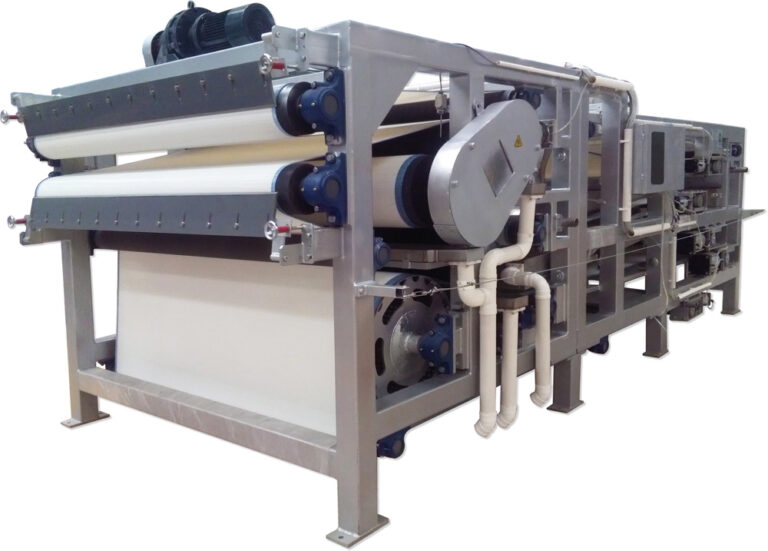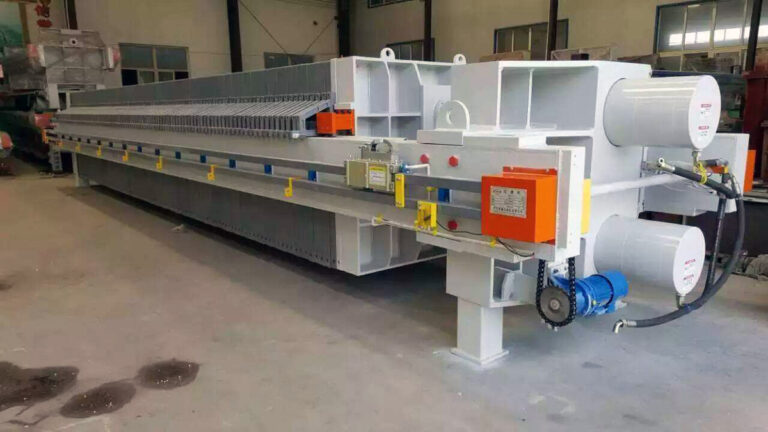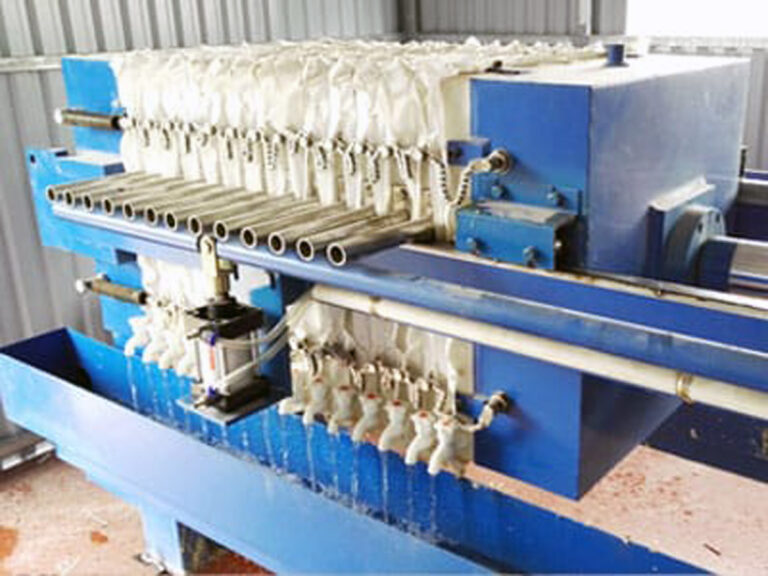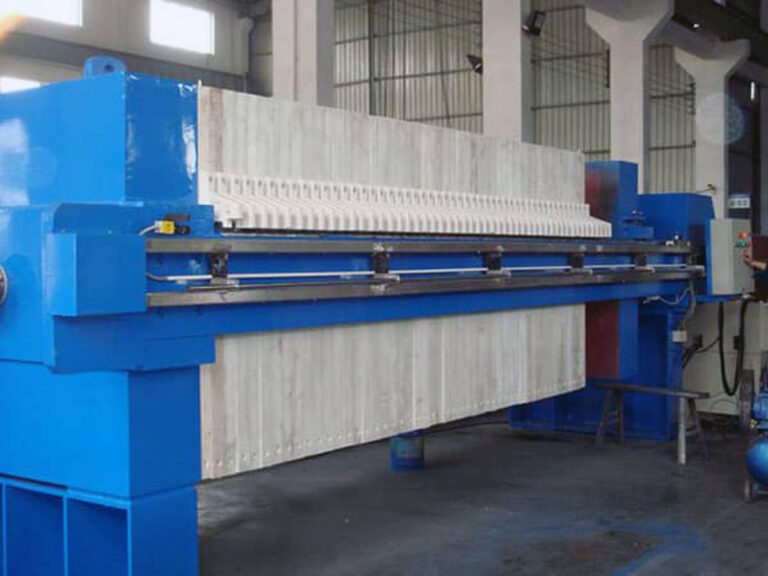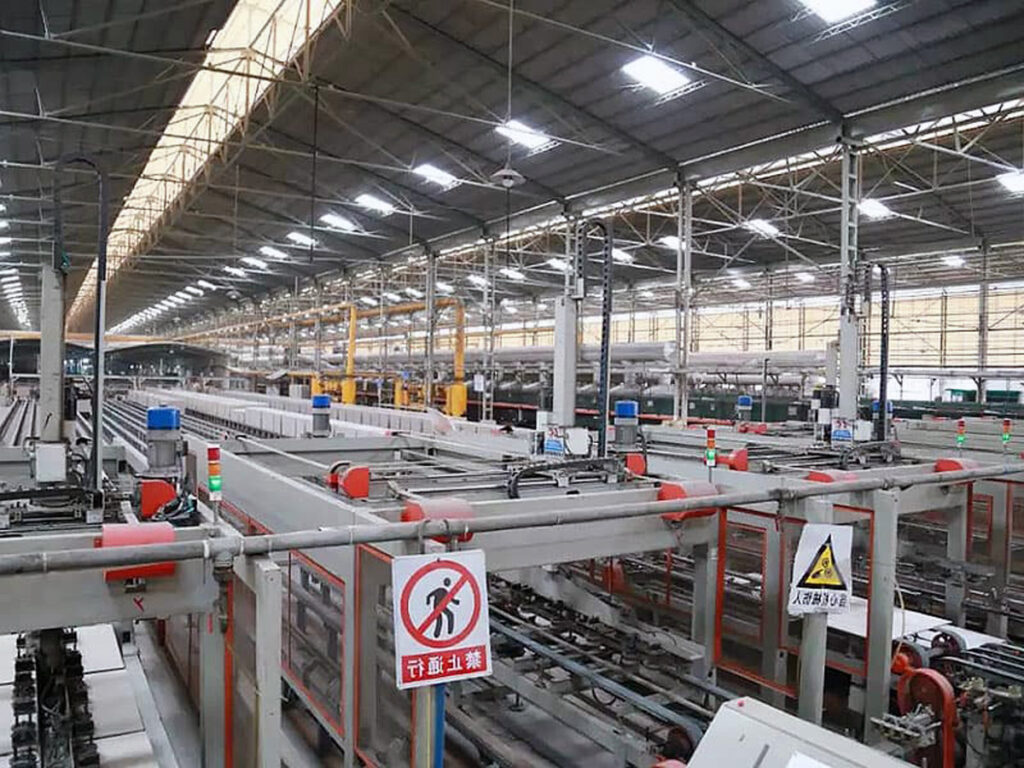The stone processing industry generates millions of gallons of contaminated water daily, creating significant environmental challenges that demand immediate attention. From granite countertop fabrication to large-scale quarrying operations, stone processing wastewater contains high levels of suspended solids, chemical additives, and abrasive particles that can severely impact local water systems if left untreated.
Problem: Stone manufacturers face increasingly stringent environmental regulations while dealing with water containing up to 10,000 mg/L of suspended solids—nearly 100 times higher than typical municipal discharge limits. This creates operational bottlenecks, regulatory compliance issues, and substantial disposal costs.
Agitate: Without proper treatment systems, facilities risk hefty fines averaging $25,000 per violation, potential facility shutdowns, and irreversible environmental damage to surrounding ecosystems. The consequences extend beyond financial penalties to include community relations damage and long-term operational sustainability threats.
Solution: This comprehensive guide explores proven stone processing water treatment technologies, implementation strategies, and cost-effective solutions that enable manufacturers to achieve 99%+ contaminant removal while reducing operational costs by up to 40% through water recycling initiatives.
PORVOO specializes in delivering customized industrial wastewater treatment solutions that address the unique challenges of stone processing operations.
What is Stone Processing Wastewater and Why Does It Matter?
Stone processing wastewater represents one of the most challenging industrial effluent streams due to its complex composition and variable characteristics. This wastewater typically contains suspended granite, marble, or limestone particles ranging from 0.1 to 500 microns, along with cutting oils, coolants, and various chemical additives used in polishing and finishing operations.
Types of Wastewater Generated
Stone cutting operations produce three distinct wastewater streams, each requiring specialized treatment approaches. Primary cutting wastewater contains the highest concentration of suspended solids, often exceeding 8,000 mg/L, generated during initial sawing and shaping processes. Secondary finishing wastewater includes polishing compounds and chemical additives, with moderate solid content but higher chemical oxygen demand (COD) levels typically ranging from 200-800 mg/L.
Cooling system blowdown represents the third stream, containing dissolved minerals and anti-corrosion chemicals. In our experience working with stone fabricators, facilities processing 100 tons of stone daily generate approximately 15,000-25,000 gallons of contaminated water requiring treatment.
Environmental Impact Concerns
The environmental implications of untreated stone industry wastewater discharge are substantial and far-reaching. Suspended stone particles create turbidity levels that can exceed 1,000 NTU (Nephelometric Turbidity Units), compared to natural water bodies typically measuring less than 4 NTU. This turbidity severely impacts aquatic ecosystems by reducing photosynthetic activity and disrupting fish reproduction cycles.
According to EPA data, stone processing facilities rank among the top industrial contributors to total suspended solids (TSS) in waterways. The alkaline nature of stone processing water, with pH levels often reaching 9-11, can alter receiving water chemistry and harm sensitive aquatic species.
| Contaminant Type | Typical Concentration | Regulatory Limit | Treatment Efficiency Required |
|---|---|---|---|
| Suspended Solids | 3,000-10,000 mg/L | 30 mg/L | 99.7% |
| Turbidity | 500-1,500 NTU | 10 NTU | 99.3% |
| pH | 9-11 | 6.5-8.5 | Neutralization |
| Oil & Grease | 50-200 mg/L | 15 mg/L | 92.5% |
Industry Compliance Requirements
Recent regulatory developments have significantly tightened discharge standards for stone processing facilities. The Clean Water Act amendments now require zero liquid discharge (ZLD) for certain stone processing operations, particularly those near sensitive water bodies. Industry consensus suggests that compliance costs have increased by 35% over the past five years, making efficient treatment systems essential for operational viability.
As environmental engineer Dr. Sarah Martinez notes, “Stone processors can no longer view wastewater treatment as a necessary evil—it’s become a competitive advantage for companies that implement comprehensive water management strategies.”
How Does Stone Cutting Wastewater Treatment Work?
Stone cutting wastewater treatment employs a multi-stage approach designed to address the unique characteristics of stone processing effluent. The treatment process typically begins with primary clarification to remove large particles, followed by advanced separation technologies and chemical conditioning to achieve discharge standards.
Physical Separation Methods
Primary treatment focuses on removing settleable solids through gravity separation and mechanical screening. Conventional settling tanks can remove particles larger than 50 microns, achieving 60-70% suspended solids reduction in properly designed systems with 4-6 hour retention times.
Enhanced settling systems incorporate lamella clarifiers or inclined plate settlers, which increase effective settling area by 3-5 times compared to conventional tanks. These systems achieve 85-90% suspended solids removal while occupying 40% less footprint—a critical advantage for space-constrained facilities.
Hydrocyclone separators provide an alternative for high-flow applications, using centrifugal force to separate particles down to 10 microns. A recent installation at a granite processing facility in Vermont achieved 92% solids removal at flow rates exceeding 500 GPM, demonstrating the technology’s scalability.
Chemical Treatment Processes
Chemical coagulation and flocculation represent the cornerstone of effective stone wastewater treatment. Aluminum sulfate (alum) and ferric chloride serve as primary coagulants, with optimal dosing rates typically ranging from 150-400 mg/L depending on suspended solids concentration and particle size distribution.
Polymer flocculants enhance particle agglomeration, creating flocs large enough for efficient settling or filtration. Anionic polymers work particularly well with stone processing wastewater, with dosing rates of 1-5 mg/L producing dramatic improvements in settling velocity. It’s worth noting that polymer selection requires careful consideration of stone type, as marble processing wastewater responds differently to treatment chemicals than granite or quartzite streams.
Advanced Filtration Systems
Membrane filtration technologies, including ultrafiltration (UF) and microfiltration (MF), provide the highest level of suspended solids removal. UF membranes with 0.01-0.1 micron pore sizes consistently achieve greater than 99.5% turbidity removal, producing water suitable for recycling back to cutting operations.
Advanced industrial treatment systems integrate multiple filtration stages to optimize performance while minimizing membrane fouling—a common challenge in stone processing applications.
What Are the Key Components of Stone Processing Water Solutions?
Comprehensive stone processing water solutions require integrated systems that address both treatment efficiency and operational reliability. Modern treatment plants incorporate redundant equipment, automated controls, and real-time monitoring to ensure consistent performance under varying load conditions.
Primary Treatment Equipment
Screening equipment removes large debris and prevents downstream equipment damage. Rotary drum screens with 1-3mm openings effectively capture stone chips while allowing maximum water flow. Self-cleaning mechanisms reduce maintenance requirements and ensure continuous operation during peak production periods.
Grit removal systems eliminate abrasive particles that can damage pumps and other mechanical equipment. Aerated grit chambers or vortex-type separators achieve 95%+ grit removal efficiency while minimizing organic matter removal—preserving beneficial bacteria in biological treatment systems.
API oil separators address cutting fluid contamination, removing free oils and greases through gravity separation. Properly sized separators achieve 80-90% oil removal, reducing downstream treatment system loading and improving overall performance.
Secondary Treatment Systems
Dissolved air flotation (DAF) systems excel at removing fine suspended particles and emulsified oils. DAF units achieve 90-95% suspended solids removal through the attachment of fine air bubbles to particles, creating a floating sludge layer for easy removal. Typical loading rates range from 4-8 GPM per square foot of flotation area.
Biological treatment systems handle biodegradable organic compounds when cutting fluids contain significant organic content. Extended aeration activated sludge systems operate effectively at organic loading rates of 0.2-0.4 lb BOD per lb MLVSS per day, achieving 90%+ BOD removal.
While DAF systems provide excellent performance, they require skilled operators and consistent chemical dosing to maintain optimal efficiency. This operational complexity can challenge smaller facilities lacking dedicated treatment plant staff.
Water Recycling Capabilities
Closed-loop water systems can reduce fresh water consumption by 80-90% in stone processing operations. Recycled water typically requires conductivity adjustment and biocide addition to prevent bacterial growth in cutting systems.
Reverse osmosis (RO) polishing systems produce high-quality recycled water for precision cutting operations. RO systems achieve 95-98% dissolved solids removal, though they generate 15-25% concentrate streams requiring additional treatment or disposal.
| System Component | Removal Efficiency | Typical Cost Range | Maintenance Requirements |
|---|---|---|---|
| Primary Clarification | 60-70% TSS | $50,000-150,000 | Weekly sludge removal |
| Chemical Treatment | 85-90% TSS | $75,000-200,000 | Daily chemical monitoring |
| Membrane Filtration | 99%+ TSS | $100,000-300,000 | Monthly membrane cleaning |
| Water Recycling | 80-90% reduction | $150,000-400,000 | Continuous monitoring |
How to Choose the Right Stone Manufacturing Water Treatment System?
Selecting appropriate stone manufacturing water treatment systems requires careful analysis of wastewater characteristics, discharge requirements, and operational constraints. The decision process should evaluate both current needs and future expansion plans to ensure long-term system viability.
Capacity and Flow Rate Considerations
Flow rate variability represents a critical design consideration, as stone processing operations typically experience 3:1 peak-to-average flow ratios. Equalization tanks provide flow control and reduce downstream equipment sizing requirements. A 6-8 hour retention time typically accommodates normal flow variations while providing pH buffering capacity.
Peak flow capacity should account for facility expansion plans and seasonal production variations. According to industry data, stone processing facilities experience 40-60% production increases during spring and summer construction seasons, requiring treatment systems capable of handling these surge conditions.
In our experience with granite fabricators, undersized treatment systems create operational bottlenecks during peak periods, forcing production slowdowns or expensive temporary treatment solutions.
Contaminant-Specific Requirements
Different stone types generate distinct wastewater characteristics requiring tailored treatment approaches. Marble processing creates alkaline conditions (pH 9-11) due to calcium carbonate dissolution, while granite cutting produces neutral to slightly alkaline wastewater with higher silica content.
Quartzite and engineered stone processing introduces resin particles and chemical additives requiring specialized separation techniques. These synthetic materials don’t settle as readily as natural stone particles, necessitating enhanced chemical treatment or advanced filtration systems.
Limestone quarries face unique challenges with naturally occurring pyrite, which can create acid mine drainage conditions requiring specialized acid neutralization systems.
Cost-Effectiveness Analysis
Total cost of ownership (TCO) analysis should evaluate capital costs, operating expenses, and regulatory compliance benefits over a 15-20 year period. While advanced treatment systems require higher initial investment, they often provide superior long-term value through reduced disposal costs and water recycling benefits.
Energy consumption varies significantly between treatment technologies. Gravity-based systems consume 0.1-0.3 kWh per 1,000 gallons treated, while membrane systems require 1.5-3.0 kWh per 1,000 gallons. However, membrane systems produce higher quality effluent enabling greater water recycling rates.
As water consultant James Thompson observes, “Facilities that invest in comprehensive treatment systems typically achieve payback periods of 3-5 years through reduced disposal costs and improved operational efficiency.”
What Are the Latest Stone Processing Water Systems Technologies?
Innovation in stone processing water systems continues advancing through automation, advanced materials, and integrated monitoring technologies. These developments address traditional challenges while improving treatment efficiency and reducing operational complexity.
Membrane Bioreactors
Membrane bioreactor (MBR) technology combines biological treatment with membrane separation in a single system. MBRs achieve superior effluent quality compared to conventional activated sludge systems while requiring 50-60% less footprint. This space efficiency makes MBRs particularly attractive for facility retrofits or expansion projects.
Recent installations demonstrate MBR capability to handle high suspended solids loading while maintaining stable biological treatment. A marble processing facility in Georgia achieved consistent 99%+ suspended solids removal with an MBR system treating 200,000 GPD, even during periods of high production.
Advanced Oxidation Processes
Advanced oxidation processes (AOP) effectively treat persistent organic compounds found in cutting fluids and chemical additives. Ozone and hydrogen peroxide systems achieve 85-95% reduction in chemical oxygen demand (COD) while improving biodegradability of remaining organic compounds.
UV/hydrogen peroxide systems provide an alternative AOP approach with lower operating costs but higher energy requirements. These systems work particularly well for treating synthetic stone processing wastewater containing engineered polymer additives.
Smart Monitoring Systems
IoT-enabled monitoring systems provide real-time data on treatment performance, chemical dosing, and equipment status. Wireless sensors monitor pH, turbidity, flow rates, and chemical tank levels, enabling predictive maintenance and optimized chemical dosing.
Machine learning algorithms analyze treatment data to predict optimal operating conditions and identify potential problems before they impact performance. A recent study showed that facilities using advanced monitoring systems achieved 15-25% reduction in chemical costs through optimized dosing strategies.
How to Implement Effective Water Management in Stone Operations?
Successful water management in stone processing requires integration of treatment technology with operational practices and regulatory compliance strategies. Effective implementation encompasses system design, installation planning, and long-term maintenance protocols.
System Design Principles
Modular system design provides flexibility for capacity expansion and technology upgrades. Standardized equipment packages reduce installation costs and simplify maintenance procedures. Consider designing systems with 25-30% excess capacity to accommodate future growth and provide operational flexibility during maintenance periods.
Redundancy in critical system components ensures continuous operation during equipment failures. Dual-train configurations or standby equipment prevent production disruptions while providing time for repairs. While redundancy increases capital costs by 30-40%, it eliminates costly production shutdowns and regulatory violations.
Installation Best Practices
Phased installation approaches minimize production disruptions while ensuring proper system commissioning. Begin with primary treatment components to achieve immediate compliance improvements, then add advanced treatment and recycling systems during scheduled maintenance periods.
Comprehensive treatment solutions require careful coordination between equipment suppliers, construction contractors, and regulatory agencies to ensure smooth implementation and startup.
Maintenance Requirements
Preventive maintenance programs are essential for sustained treatment performance and equipment longevity. Weekly inspections, monthly performance testing, and quarterly equipment servicing prevent minor issues from developing into major problems.
Operator training represents a critical success factor, as proper system operation directly impacts treatment efficiency and equipment life. Facilities with comprehensive operator training programs achieve 20-30% better treatment performance and 40% longer equipment life compared to facilities with minimal training.
| Maintenance Activity | Frequency | Estimated Cost | Performance Impact |
|---|---|---|---|
| Chemical System Calibration | Weekly | $200-500 | 5-10% efficiency |
| Membrane Cleaning | Monthly | $1,000-2,500 | 15-20% efficiency |
| Equipment Overhaul | Annual | $5,000-15,000 | 25-30% efficiency |
| Operator Training | Quarterly | $2,000-5,000 | 20-25% efficiency |
Conclusion
Stone processing wastewater treatment has evolved from a regulatory necessity to a strategic operational advantage for forward-thinking manufacturers. Modern treatment systems achieve 99%+ contaminant removal while enabling 80-90% water recycling, transforming environmental compliance costs into competitive advantages through reduced water consumption and disposal expenses.
The key insights from this comprehensive analysis demonstrate that successful stone processing wastewater management requires integrated solutions addressing both current compliance needs and future operational requirements. Investment in advanced treatment technologies, coupled with proper system design and operator training, typically produces payback periods of 3-5 years through reduced operational costs and improved regulatory compliance.
Looking ahead, automation and smart monitoring technologies will further optimize treatment performance while reducing operational complexity. Facilities that embrace these innovations today position themselves for sustained success in an increasingly regulated industry environment.
For manufacturers ready to implement comprehensive water treatment solutions, the next steps involve conducting detailed wastewater characterization studies, evaluating site-specific treatment requirements, and developing phased implementation strategies that minimize production disruptions while maximizing long-term operational benefits. Consider how your current water management practices align with industry best practices and identify opportunities for improvement that could enhance both environmental performance and operational profitability.
What specific water treatment challenges does your stone processing operation face, and how might the technologies discussed here address your unique operational requirements?
Frequently Asked Questions
Q: What is stone processing water, and why is its treatment important?
A: Stone processing water refers to the wastewater generated during stone fabrication activities such as cutting, polishing, and washing. This water contains stone particles, slurry, and other suspended solids that can harm the environment if discharged untreated. Treating this water is crucial to remove contaminants, prevent pollution, comply with environmental regulations, and enable water reuse within the facility, promoting sustainability.
Q: What are common treatment applications used for stone processing water?
A: Treatment applications for stone processing water typically include:
- Coagulation and flocculation: Chemicals are added to agglomerate fine particles into larger clumps.
- Sedimentation: These clumps settle out in clarifiers or thickeners.
- Filtration: Water passes through filters to remove remaining solids.
- Water recycling systems: Treated water is often reused to reduce freshwater consumption and lower costs.
These processes together ensure efficient removal of solids and recovery of high-quality water suitable for reuse.
Q: How does water recycling benefit stone processing facilities?
A: Water recycling in stone processing offers multiple advantages:
- Cost reduction: Less freshwater intake and lower wastewater disposal fees.
- Sustainability: Conserves water resources and minimizes environmental impact.
- Improved equipment performance: Clean recycled water prevents wear from abrasive particles.
- Enhanced product quality: Consistent water quality improves stone finishing and polishing.
Overall, recycling helps facilities operate more efficiently and responsibly.
Q: What advanced technologies are used in modern stone processing water treatment?
A: Advanced technologies include automated systems that integrate coagulation, flocculation, vertical or horizontal thickeners, and filtration units designed specifically for stone slurry treatment. Some systems use active water separation combined with gravity settling tanks and weirs to maximize particle removal. These solutions are customizable by flow rate and designed for low maintenance, enabling high treatment efficiency up to 98%, which supports sustainable water reuse in stone fabrication shops.
Q: How do stone processing water treatment solutions support environmental compliance?
A: Proper treatment of stone processing wastewater ensures that contaminants such as suspended solids, fine particulates, and chemical residues are removed before discharge or reuse. This prevents soil and water pollution, helps meet local environmental regulations, and reduces the risk of fines or shutdowns. Water treatment solutions also promote corporate environmental responsibility, enhancing the reputation of stone processing businesses that implement them.
Q: Can stone processing water treatment systems be customized for different facility needs?
A: Yes, many water treatment systems are designed with customization in mind to accommodate various facility sizes, processing capacities, and specific wastewater characteristics. Options include adjustable flow rates, modular setups, and tailored coagulation-flocculation chemistry. Such customization ensures optimal performance, cost efficiency, and compliance with operational requirements unique to each stone processing operation.
External Resources
- Efficient Water Recycling for Stone Processing – Reduce Costs, Increase Sustainability – This article details advanced water treatment techniques such as coagulation, sedimentation, and filtration specifically designed for stone processing wastewater, highlighting cost reduction and sustainability benefits.
- Granite Water Recycling | Stone Cutting Water Filtration – Weha USA – Weha USA offers a range of water treatment and recycling systems engineered for stone fabrication shops, outlining their use for recycling, dust management, and environmental compliance.
- Water treatment solutions for Stone Cutting and Dewatering – This resource describes water clarification and filtration methods for stone cutting operations, emphasizing dewatering solutions and the role of clarifying plants in separating solids from process water.
- Water Recycling in Stone Fabrication – BACA Systems – Focused on water recycling for stone fabrication, BACA Systems highlights PURE FILTRATION technology for removing stone particles, improving water quality, and supporting sustainable manufacturing.
- The Value of Water – Evaluate your water treatment process – Park Industries – Park Industries explains the importance of automated water treatment systems in processing stone slurry water and the use of coagulants and flocculants for safe, efficient recycling in fabrication shops.
- Advanced Water Treatment Solutions for Stone Industry | Stone World Magazine – Stone World Magazine reviews state-of-the-art water recycling and treatment applications tailored for the stone processing sector, discussing benefits for operational efficiency and environmental impact.
